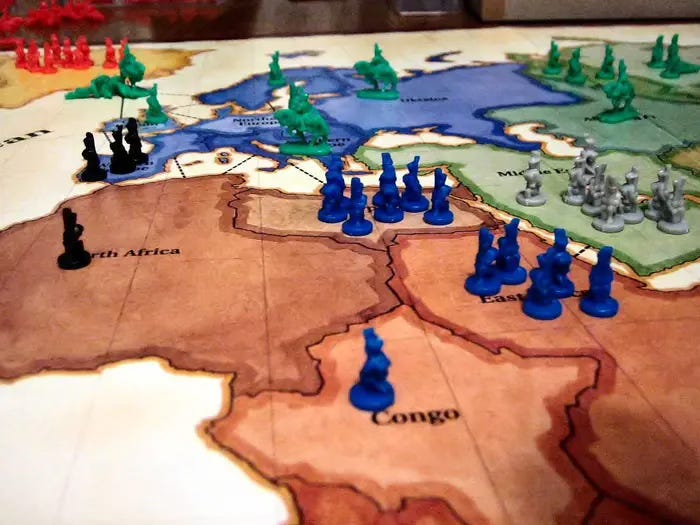How Humans Are Unfolding Space-SOF-Cyber in New Conflict Configurations... [Part 2]
A Four Part Series: Part 2
This is part two of a four part series focusing on the Space-SOF-Cyber construct, often termed ‘Triad’ and ‘Nexus’ in various defense circles. If you missed Part 1, check it out here. In this series, I will unpack the concepts, discuss different issues and tensions, and address certain security considerations with AI, emerging technology, and strategic shifts that may shape what future conflict becomes for our species as we venture into becoming a multi-planetary species yet still able and willing to wage war.
(Image source: https://www.facebook.com/photo.php?fbid=837732955069204&id=100064975202995&set=a.244999031009269)
The above quote, put into public record by the U.S. Cyber Command Commander, General Timothy Haugh, was stated in testimony this past April to the Senate Armed Services Committee. In the above photo, General Haugh is seated near General Fenton, the U.S. Special Operations Commander (USSOCOM). Not shown is U.S. Space Command Commander General Stephen Whiting, representative of the third element of the Space-SOF-Cyber Nexus. Nexus synthesizes space, SOF, and cyber into existing strategic deterrence (STRATCOM) to keep conflict below the level of high intensity or declared hostilities; thus we must consider the Space-SOF-Cyber Nexus within ‘Irregular Warfare’ of competition and crisis between various states and non-state actors. Nexus is often depicted in some graphic depiction involving these combatant commands (with some geographic, others functional), with CYBERCOM and SPACECOM in the unusual situation that their domains are not neatly overlayed upon the geographic map of the world.
If you ever played the classic ‘Risk’ board game, you know the above image and how the map of the world provides essential structure to the simulation of war. Rolling dice and moving armies around occupied territories and into adversary locations is the name of the game. Modern conflict until the late 20th century has been very much a geographically situated, terrestrial and physical domain-centric system of organized violence. Over air, land, or sea, the military instruments of state power (or non-state actors engaging against specific state systems) wage war. Today’s Joint Forces are largely integrated along these same classical lines- the physical and terrestrial domains of air, land, and sea are carved out into geographic combatant command boundaries. For the United States, this is why CENTCOM and EUCOM meet at certain borders, while AFRICOM works up to other neighboring borders, with those military leaders charged with running the Combatant Command engaging with fellow bordering commanders to coordinate and deconflict activities.
Keep reading with a 7-day free trial
Subscribe to Sapiens, Technology, and Conflict: Ben Zweibelson's Substack to keep reading this post and get 7 days of free access to the full post archives.






